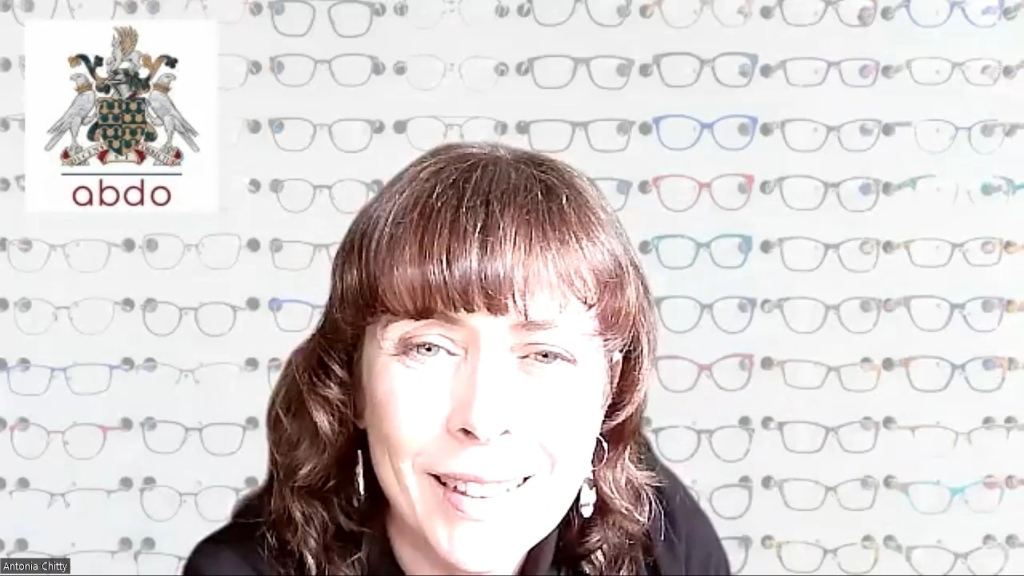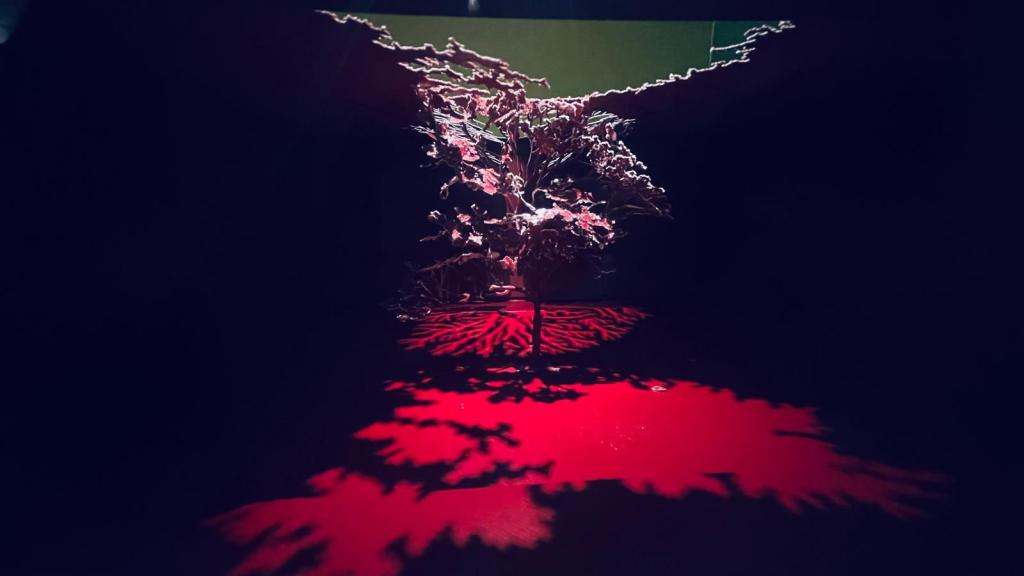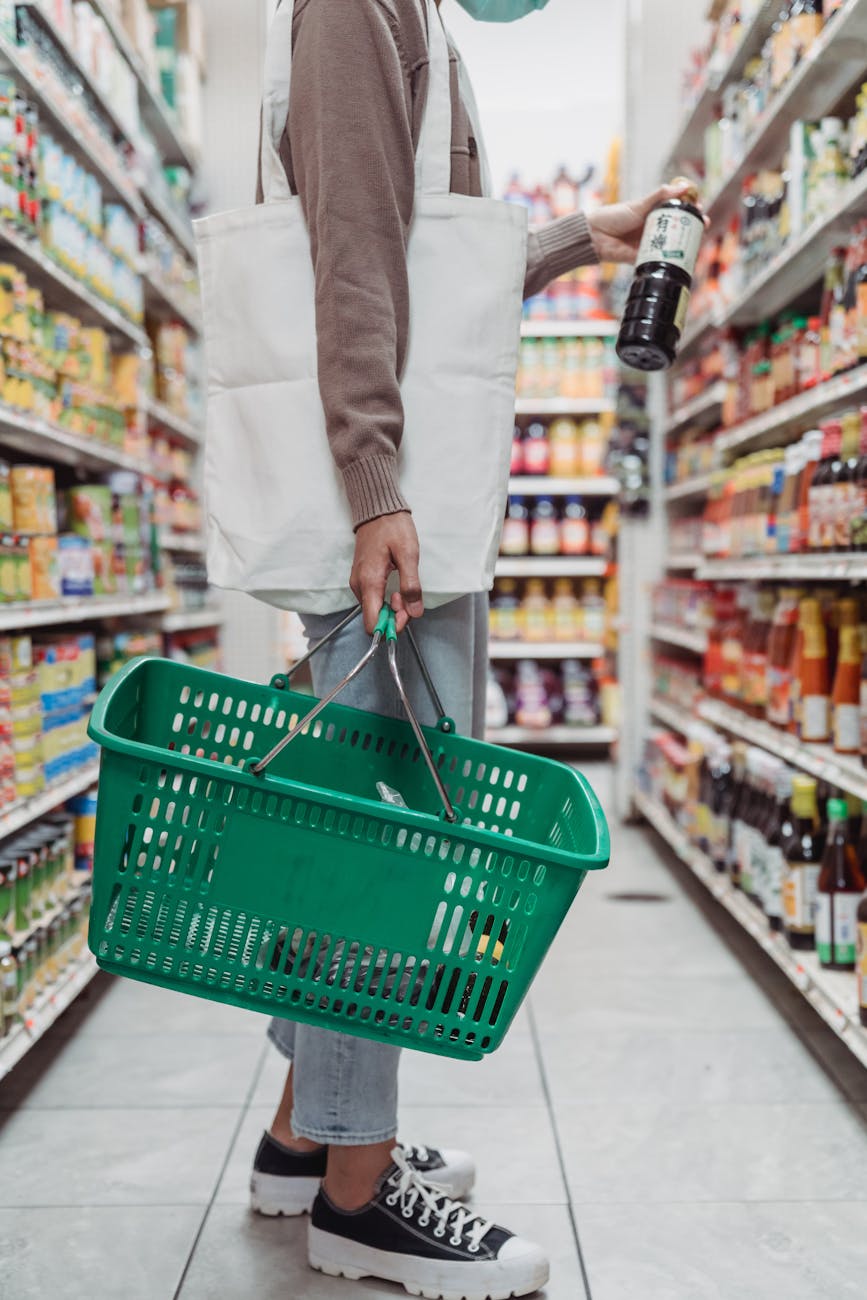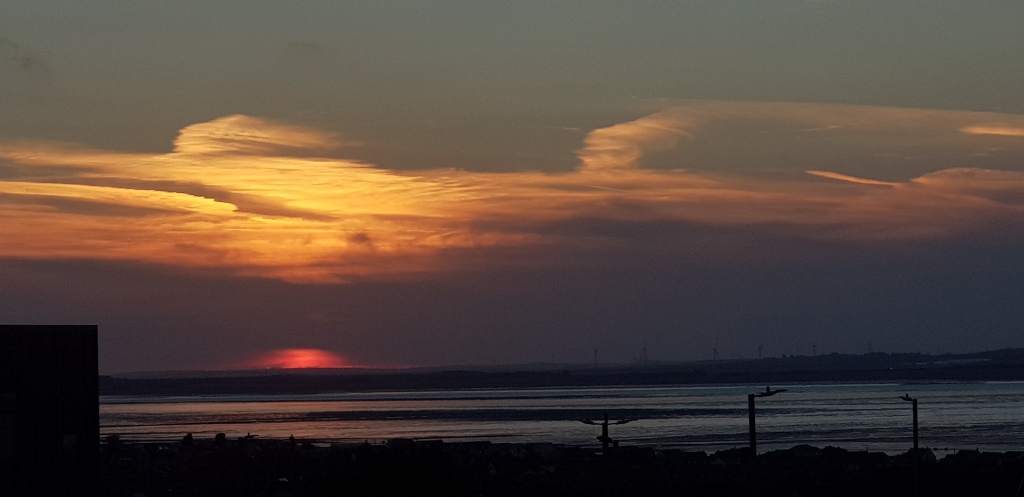Mark Charlwood’s – our contributor’s – piece on the ‘Spectacle of Waste‘ was a grim account of the eyewear’s environmental and financial impact.
According to Statista, 59% of adults in the UK wore spectacles in 2020. A year before, ‘Optegra by Censuswide’ surveyed 1000 people with existing vision correction who wore spectacles or contact lenses. It found that, on average, people who use prescription eyewear will buy 26 pairs of glasses throughout their lifetime!
Reducing the number of prescription glasses we throw away is a crucial issue in our efforts to reduce our environmental impact.
To discuss how the optics sector is becoming more sustainable and is helping us reduce waste, I invited Antonia Chitty, the Head of Communications and IT at the leading professional body for dispensing opticians – the Association of British Dispensing Opticians (ABDO).
Antonia has been working with the Association in a freelance capacity since 2009, and in March 2018, she joined ABDO as Head of Communications. She is an award-winning entrepreneur, author and journalist. Antonia is the author of over 20 books on business, health and special needs. She has worked for organisations including the Royal National Institute of Blind People, the British Medical Association and Which?, and has run her own PR agency.
Antonia, thank you for making time in your busy schedule to discuss sustainability in the optics sector. Some of the ABDO’s members try their best to offer sustainable options. How would the consumer find them? And do you think it’ll help if you promote these members on your website?
“With the sustainability questionnaire we offer on our website, members get the opportunity to download a badge at the end so they can print that out and put that in their practice window or put it on their website so people can see that they’re working towards improving their sustainability.
We don’t expect anybody to achieve top marks straight off, and they know that. But you can say this practice is addressing sustainability issues.
More and more practices are looking to collect old used spectacles, which is a big issue for consumers.
We’ve had some issues in the past with making sure that they aren’t just collected but they are actually then repurposed correctly.
But those ethical issues, you can’t just send waste to the Developing World and say, hey, you can use our spectacles because that’s not always the right thing. What you should be doing there is saying, right, how do we set up other countries with the right infrastructure, training and supports to offer eyewear to people, and maybe old spectacles will be part of that or maybe they won’t.
But it’s not a place to dump all waste spectacles. Finally, there are more companies now that understand about recycling.
Over the last five years the interest in recycling more challenging plastics has really grown because if you look at your spectacles, there’s one sort of plastic for the lens and that might not be the same plastic as somebody else’s lenses.
And then there’s many different plastics that make the frames and they’ve all got metal parts.
But despite all that, there are companies like Refractory and Recycline, that they will strip them down to the parts, they’ll, melt them down. And a lot of them are being used in, I guess, what I call particle board.
So plastic boards that you can use inside furniture, for example, or some companies specifically encourage opticians to use them for their own shop fittings, which is a very nice circular thing.
Those ideas about reusing those plastics to make spectacle frames.
So and people have made them into decorative items such as sculptures just to highlight that these things can be reused.
So we have really wised up. And if your local practice doesn’t yet recycle spectacles, there’s going to be one in your area that will.
So why not say to them, “Have you thought about recycling”?
There is a small cost to the practice because they have to cover the cost of purchasing the box and shipping it. But when you break that down to sort of the cost per patient, given that each box would hold 500 pairs of spectacles, we do encourage people to invest in that because consumers want to see, the circle that they buy something from a practice, but they can bring it back at the end of life.
We’re also talking about things like re-glazing spectacles. It’s more complex cases than you might think because obviously plastics have a certain life span and they become brittle.
So if you walk into a practice and say, “I want to re-glaze my specs”, the optician will have to examine your frames and consider whether it’s safe to do so or whether there’s a too high risk of the frame breaking.
Some practices are not very well set up for re-glazing. And we’d like to see that more. But if you’ve invested in a good quality frame in the first place and you go back to your regular optician and say, well, I bought this from you last time, really like it, can you put lenses in again to my new prescription, that should be a good option on offer.”
In my experience, most high street opticians say, ‘Get new glasses because it will cost you more to keep the old pair’.
“And that is an area of concern because we at ABDO need to be talking to the big groups. The chains to say, well, think about your pricing on a legal basis because it’s the ethical thing to do to make it affordable and sensible, not just to buy a whole new thing, but to keep using the one you’ve got.”And that is an area of concern because we at ABDO need to be talking to the big groups. The chains to say, well, think about your pricing on a legal basis because it’s the ethical thing to do to make it affordable and sensible, not just to buy a whole new thing, but to keep using the one you’ve got.
So, that is definitely something that your previous article highlighted, and we would be highlighting this to those practices that don’t.”
And there is also a big issue with unused pairs of spectacles sitting in people’s drawers…
“But we’re seeing Specsavers, for example, which is the biggest group now, putting these recycling boxes in every store, which, from a tipping point of view is fantastic because they are on almost every high street, which does mean everybody can clear out their drawers. To send them back to be used in a sustainable way.
Specsavers aren’t just thinking about recycling. They are trying to look at the whole supply chain.
We had a meeting with them recently, and in fact, only 2% of their carbon emissions come from their high street stores.
The other 98% is in the manufacturing process. So although, as a consumer, we may see the shop front as a big issue, the place they’ve got to get started first is – and I think this would apply for many manufacturers – the frames that are made in China. And how are they shipped? How are they packaged?
And yes, we’ve got to look at the bulk side of things, and we do know companies that have switched from delivering every new frame wrapped in plastic to delivering them wrapped in a small card wrapper.
You’ve got to keep them separate so they don’t scratch each other. But card or biodegradable plastic is a big step forward. Frames get put on display with dummy lenses in them. So again, this company, I know, they’ve switched to biodegradable dummy lenses, so they’ll be fine for the duration they are displaying the frames and biodegrade when disposed of.”
“The plastic manufacturers, also, are the ones who need to be thinking about where the plastic comes from.”
There is also the problem of the huge quantities of water used to make prescription lenses.
“From the point of view of the water. There is water used in the process, but we’re seeing more people understanding that you can’t just spew water out with small particles of plastic in.
So there are now glazing machines that will filter out the plastic. So you can actually use that as a material for building bricks, for example, and then the water gets re-circulated.
So, yes, a massive step forward with that. Obviously, not every lens glazing factory has got that yet. But I think we’re going to see a big shift when people see that they just don’t need to waste water.
It’s been a very difficult time financially for a lot of people. But the more we realise that wasting power costs us money. The more we realise the positive benefits of saving power and saving money, and that’s on an individual basis, on a practice basis, but also on a manufacturer’s basis. If they can make a more fuel-efficient process or a more water-efficient process. It’s going to save hundreds of thousands. And at the moment, that’s really key.”

How many members are registered with the Association?
“ABDO has something between seven and 8000 members. But the work we do on sustainability we see as something that cuts across the whole industry. So, we’re working with the optometrists who are another 15,000 professionals as well.
Plus, when you take into account practice managers, optical assistants, you’re probably looking at 100,000 people who are involved in the whole industry, manufacturers & retailers.”
How do you think ABDO can influence the optics sector to become more sustainable? So I know you have a comprehensive sustainability strategy, but the big question is how much the big players are willing to listen.
“Okay. It’s been really heartening. So we started off thinking about a sustainability campaign before COVID, and it all got slightly derailed.
But we got back on track, and we launched the ‘SEE-Summit on the Environment’ two years ago.
‘SEE’ for Social, Ethical, Environmental, but also because it’s optics seeing and, we had really good participation in the first event with 500 or so people participating.
Speakers from across the optical world and beyond.
And then, we pulled together a round table of all the major optical organisations. And so it’s not just individuals who’ve been involved. It’s everybody. So the GOC, our regulatory body; the AOP, which is sort of the optometrists union; the College of Optometrists professional body; the Optical Suppliers Association, the Association of Contact Lens Manufacturers and FODO.
There’s not one organisation that said ‘no’ to participating in this Summit. And they’ve all sort of stepped up. They’ve all got involved. So by the time of the second SEE Summit, I’m proud to say we had a complete cross-sector involvement.
We’ve issued a joint statement which you can find on the website from the sector about what we want to do. The roundtable still meets to share sort of knowledge and progress. So that’s very much still active.
And what I’d say is, in the past, we’ve really managed to take another leap up to getting proper involvement with the NHS. There was an early study that looked at the carbon footprint of a small number of optical practices done by the Centre for Sustainable Healthcare.
We’re now working on a project to look at not just measuring the carbon footprint but also working out how we get a small sample of practices to net zero using the sustainable mobility questionnaire and educational resources that follow that.
But follow that, and we’re going to be working with the team from the NHS who are going to be transforming the whole eye care pathway to make sure that that is all done in a sustainable manner.
Looking at, telemedicine, patient travel, the amount of power that’s used, if a piece of equipment is left on overnight, you know, from the minor things to liaising with the big companies that maybe are supplying drugs to the whole of the NHS.
So I feel that here’s this absolute commitment across the board to doing this, whether it’s us, a small organisation that’s changing its light bulbs or looking at its own use of paper, up to working with the big manufacturers.
What we need to look at, which we’ve already sort of started doing some research on, are the manufacturers themselves, what are they doing? Sort of manufacturers have sustainability policies but it’s not until somebody sits down and says, let’s put all these sustainability policies up against each other, you can actually spot the gaps.
So that would be a good bit of systematic research. It takes time for supply chains to change, and that’s very much the message we get from the Optical Suppliers Association that a lot of people are working on this, but it’s sort of one step at a time kind of thing.
If we get our members to keep asking, they will keep making small changes and it will get there, but it can’t be done instantly.
And I guess one other area of my concern is I know about all the people who are involved and committed. At some point, we need to have a good scout round and say, who’s not yet come on board, and how do we help them? What’s blocking them?
What, what aren’t they hearing? As you’ve seen, we’ve got all the tools for people to develop their own sustainability policies to take a look at how their business runs. We just need to make sure that everybody is doing it.
So one more thing. We’re also talking to, the big multiples who are absolutely aware that this is an issue. So we’re very positive that we are really reaching individual practice owners and big groups.
So that it’s on everybody’s agenda one way or another.”
So do you think setting a deadline would encourage people in the industry to pull themselves together and get on board? Obviously, the system must change too. So if the NHS gets involved, it will change things.
“I mean, the NHS has very specific deadlines. We looked at setting targets within our roundtable, but we felt that actually, as contractors to the NHS, we didn’t need to set separate targets. That wasn’t going to help anybody. We needed to work within the NHS targets.
So if you look at the Greener NHS website that outlines their roadmap, and I think because if you’re looking at, the plastics applied for optical drugs and other single-use instruments, all these are big issues that the big manufacturers do need the time to work on.
And if in the meantime, operations managers can be looking at buildings, insulation, utilities, things like that, we can all come together to actually say, that within the next five years, we’re going to make this much difference. In the next ten years, we’re going to make that much difference which is NHS’s ultimate goal of being a net zero health service. “
How hopeful are you in seeing a shift in the industry into more sustainable practices?
“I’m 100% sure. I’m entirely optimistic and realistic that every company we talk to is making changes, and some may be going faster than others.
There are these claims of greenwashing. I don’t think anybody’s going to get away with greenwashing for very long because we’re all becoming much savvier as consumers.
People understand carbon emissions and types of plastic, and where do plastics come from? And you see the new generations of frame manufacturers, particularly, coming up. And they will explain what sort of plastic it is and where it comes from.
Younger consumers are very clear. They want to know exactly where things are from. And so you’re getting young entrepreneurs who are setting up businesses that respond to that. And the older ones amongst us are saying, okay, that’s a good idea.
So, I am realistic that optics is making a massive change at the moment from a health point of view, from the retail point of view, everybody is working together. It’s quite groundbreaking. The fact that we’ve got all the organisations saying, we’ll come and have a meeting, it’s all fine.
We’ll put aside differences on other issues because this is an existential crisis. And we all know we’ve got to prioritise this. And I think the goodwill is that if somebody, a manufacturer is going to say, I don’t know where to start.
People will put competitive differences aside and say, okay, well, have you thought about this? Let’s talk. People want to help each other to become more sustainable because we all know it’s for our benefit, our planet’s benefit, and our children’s benefit.
And we can’t afford not to do it.
So, yes, I’m realistic, and I am seeing real change in the optical industry. And for anybody who goes into a practice and says, oh, they weren’t interested in re-glazing.
Go back again in a year’s time, and I hope things will have changed. But also shop around. Go and talk to other people in your town.
Find a different practice because there are so many opticians out there who understand that climate change is a real crisis that we need to deal with now. And they are making real changes from, the way they power that practice to the ranges that they offer. We see a change in sustainability, in optics. And, it’s happening right now. “
“Consumers just need to go in and keep asking because consumer demand drives change.”
Sources
Antonia’s websites: Antonia Chitty & FamilyFriendlyWorking






You must be logged in to post a comment.